|
The Devils is thus a historical costume drama set in a modernist or sci-fi setting, the oil and water mixture of David Lean and Godard, Versailles and Alphaville. Whether you care to see the movie depends on your tolerance for that kind of flamboyance. I guess I'm all in favor of letting artists try to find the truth in their own ways. It seems to me that Dali's interpretation of Christopher Columbus gets to the importance of his voyages to the world, whether or not it sticks to precise historical details. Russell's take on The Devils can be viewed the same way. As long as people understand that the details are not meant to be historical, I don't really see any problem. The film is certainly an experience like no other of its time, maybe any time. There are 12 minutes of footage consisting of naked nuns acting nutty and exposing their genitalia to the cameras, and there are several nuns masturbating themselves on a giant crucifix. One naked woman sits on Christ's face. Vanessa Redgrave masturbates herself with a candle, and later with the late Father Grandier's fire-blackened and phallic-shaped bone. There are bizarre scientists treating the plague with hornets and crocodiles. There are open sores and rotting corpses and on-camera enemas. There is a duel between a man with a sword and another wielding the ever-present crocodile. You get the idea. There is also a surprisingly measured performance from Oliver Reed as Father Grandier. Reed was normally known for his own baroque and excessively pugnacious performances, but he must have realized that he needed to play this role as a counterpoint to the excesses in the film, so he stripped Grandier down to some raw emotional truths. The viewer ends up liking and admiring Grandier by the end of the movie, even though he seems callous and arrogant at the beginning. Grandier's religious faith seems simple and unaffected compared to the cynical manifestations of faith used by Richelieu and the witch-hunters to further their personal ambitions, and Grandier exhibits genuine regard for the people of his city, Catholic and Protestant alike. (By opposing Richelieu, Grandier was sheltering his town's Protestants from Richelieu's pogroms.) |
||||||
|
Scenes in this film have often been parodied. Mel Brooks's interpretation of Louis XVI in History of the World is taken almost verbatim from Russell's portrayal of Louis XIII in this film, right down to the king's tone of voice and his shooting peasants for amusement. (Louis shoots a man clad in a bird suit, then bids him "bye-bye blackbird".) Monty Python's "I'm not quite dead yet" scene in Holy Grail is altered very little from the "bring out your dead" scene in The Devils. Parody, however, is a tribute more than a slight. Yup, Ken Russell made a bold, strange, film which people love to mock. But people don't forget it. |
|||||
| Some examples of the film's dazzling and original visual sense: | ||||||
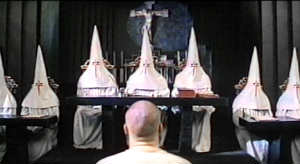 |
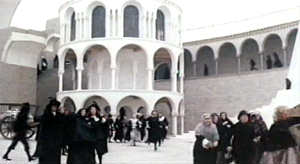 |
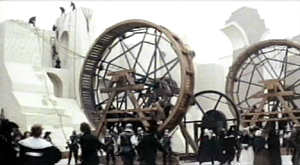 |
||||
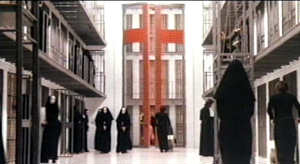 |
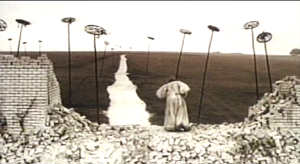 |
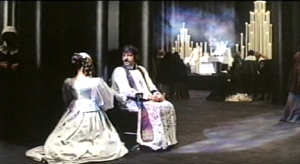 |
||||
|
||||||
